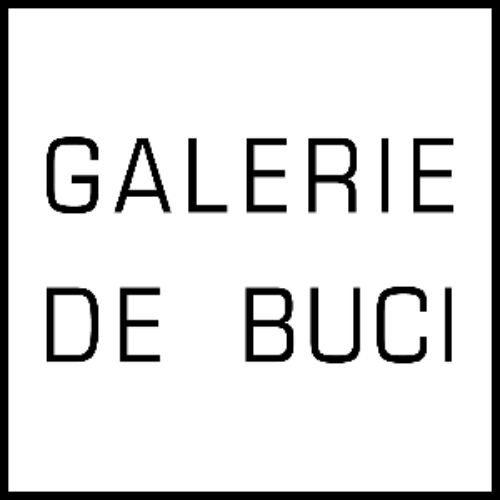The Body in Icelandic Art
Rethinking Presence at the Galerie de Buci
Waterfalls of Gullfoss under the snow in Iceland
Photo: Pierre-Selim Huard
In honor of the current exhibition at Galerie de Buci, “Boreal Heat,” which includes recent works by Icelandic artists Reinar Foreman, Björk Viggósdóttir, and Ástríður Ólafsdóttir, we are dedicating this week’s article to a notion which is often overlooked when thinking about Nordic art: the human presence. Read along to follow the ways in which these artists challenge traditional notions of representation and reimagine the body as a vessel of memory, myth, and material transformation.
The body is not the first thing that comes to mind when we think of Icelandic art. More often, we picture wind-swept landscapes, volcanic drama, and cold geography. But "Boreal Heat" invites us to look elsewhere—to the human figure, not always as a literal subject, but as a persistent presence running through varied materials and approaches. In the works of the three featured artists, the body becomes fragmented, veiled, suggested, or entirely absent—yet always central.
Challenging the Stereotype
When thinking of Icelandic art, it’s easy to imagine vast, uninhabited landscapes—photographs of glaciers, minimalist representations of volcanic plains, or dramatic renderings of the aurora borealis. This image, though not inaccurate, is limiting. Exhibitions and artists such as Olafur Eliasson or Ragnar Kjartansson have contributed to this perception, often emphasizing the elemental and the environmental. But Boreal Heat, now on view at the Galerie de Buci, offers something markedly different. Here, the landscape is internal, and the human body—not the Icelandic terrain—is the primary field of exploration. The three artists featured—Reinar Foreman, Björk Viggósdóttir, and Ástríður Ólafsdóttir—shift attention away from Iceland’s exterior drama to focus instead on psychological and physical presence. Through fragmented figures, veiled forms, and quiet gestures, they construct a visual language that speaks to memory, emotion, and transformation. Rather than using nature as a backdrop, they use the body as a vessel—of myth, tension, fragility, and resistance—reshaping what Icelandic art can be.

Reinar Foreman, Apollo and Daphne, 2024
Photo: Galerie de Buci
Photo: Galerie de Buci
Hidden in Draperies
In the work of Ástríður Ólafsdóttir, the body appears not through direct representation but through the weight and flow of fabric. Her figures are completely obscured, yet intimately present—defined by the way cloth clings, folds, or hangs. Drawing on Italian drapery techniques, Ólafsdóttir transforms textile into form, allowing each crease to suggest a leg, a bend, or a breath. The drapery becomes both barrier and revelation: it conceals identity while emphasizing physicality, inviting the viewer to read emotion in the fall of a fold. In her pictorial spaces, these shrouded figures are the only anchors, sculptural yet transient. Their anonymity universalizes them, yet each form feels distinct, individualized by the unique way the fabric molds to it. In this way, Ólafsdóttir reclaims drapery not as decoration, but as a tool for shaping presence—and making the invisible body felt.

Ástríður Jósefína Ólafsdóttir, Il riposo, 2024
Photo: Galerie de Buci
Photo: Galerie de Buci
Contemporary Mythologies
In Reinar Foreman’s work, the body is not an object of admiration but a site of instability, memory, and tension. Drawing on Greco-Roman mythology, he introduces figures like Anchises, Aeneas, and Ascanius not as heroic icons, but as fragmented, spectral presences. His paintings blur the line between figuration and abstraction—limbs emerge and dissolve, torsos twist or fade, and no form is ever fully intact. The bodies appear in motion or mid-transformation, resisting fixity. Executed on rough, almost abrasive textile surfaces, his brushwork is fast and raw, creating an expressive, unfinished quality that further destabilizes the figure. The use of vivid pigments, like chromed yellow, gives these forms a ghost-like glow, as if they were lingering at the edge of visibility. Foreman’s reference to Bernini’s dramatic sculptures is undercut by an intentional erosion of clarity, echoing the psychological distortion of Francis Bacon. These mythological bodies are not idealized—they are wounded, unstable, flickering between presence and absence. Through this, Foreman repositions the body not as a symbol of eternal form, but as a vulnerable archive—one shaped by history, fractured by time, and open to reinterpretation.

Reinar Foreman, Aeneas, Anchises and Ascanius II, 2024
Photo: Galerie de Buci
Photo: Galerie de Buci
The Physical and the Ephemeral
In her sculptural series Infinite Randomness, Björk Viggósdóttir explores the body not through depiction but through material metaphor. Porcelain pebbles—traditionally associated with solidity and permanence—are pierced and bound by fine red and blue threads, which bend and distort them as if under invisible pressure. The effect is strangely anatomical: the threads recall veins, nerves, or connective tissue, animating the static with a pulse-like tension. These interventions turn inert matter into something mutable, even sentient. The transformation is subtle yet powerful—the stone, a symbol of fixity, becomes pliable, suggesting that even the most solid forms can be reshaped. The body is never shown, but its traces are everywhere: in the warped curves of the porcelain, in the strain of the thread, in the quiet suggestion of trauma or tenderness. Viggósdóttir’s work here merges the physical and the ephemeral, offering a vision of the body as both fragile and resilient, present not in full form but in the lingering effects it leaves behind.

Björk Viggósdóttir, Infinite randomness II, I, 2024
Photo: Galerie de Buci
Photo: Galerie de Buci
Minimalist Abstraction
Björk Viggósdóttir approaches the body through absence rather than form, using minimalist abstraction to evoke presence without depiction. In her works on delicate rice paper, a single gesture—a point of blue light, a faint mark—can carry the weight of a figure. There are no outlines, no anatomical cues, yet the compositions suggest balance, breath, and posture. Influenced by Taoist notions of harmony, Viggósdóttir treats space as an active participant, allowing emptiness to speak as forcefully as form. The body here is not rendered but implied, felt in the tension between stillness and movement, between fragility and control. Her minimalist vocabulary reduces the visual field to its essentials, yet never feels cold or distant. Instead, it invites quiet attention, encouraging viewers to sense rather than see the figure. In this pared-down approach, the body becomes an atmosphere—something that hovers in the background, shaped by energy rather than contour.

Björk Viggósdóttir, Infinite randomness V, XII, 2024
Photo: Galerie de Buci
Photo: Galerie de Buci
In Boreal Heat, the body is never still or complete. It flickers through myth, hides in folds of fabric, emerges in porcelain curves, or hovers in the space between marks. Foreman, Viggósdóttir, and Ólafsdóttir offer three distinct but interwoven visions of embodiment—resistant to clarity, rich in tension, and full of suggestion. Their work broadens the vocabulary of Icelandic art, shifting the focus inward, toward forms that move, disappear, or endure in altered states. To witness these explorations firsthand, visit the Galerie de Buci before the exhibition closes on April 5.

